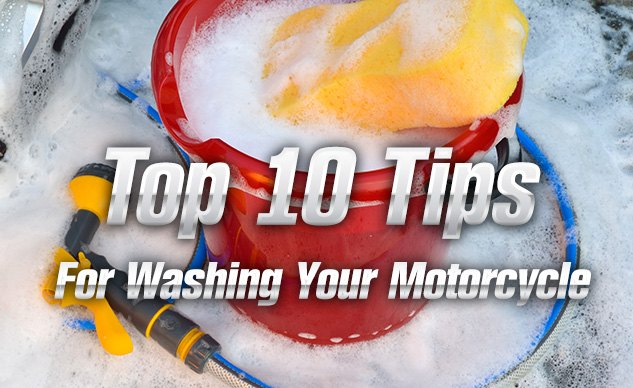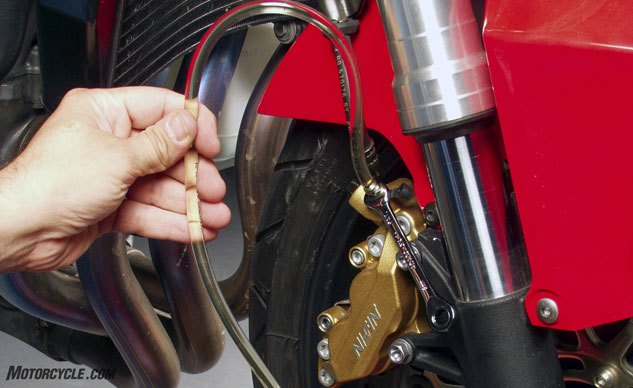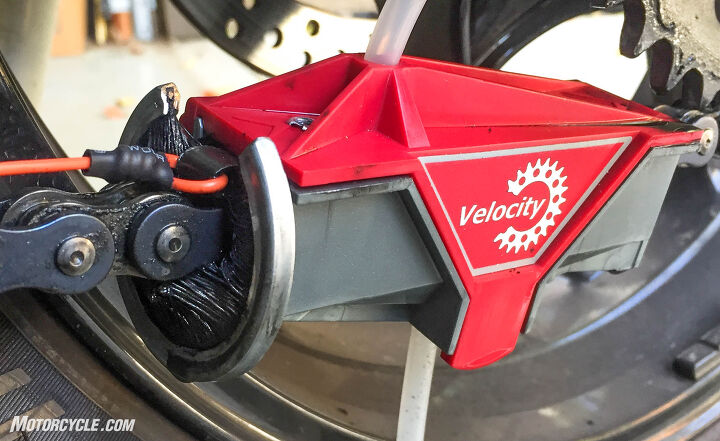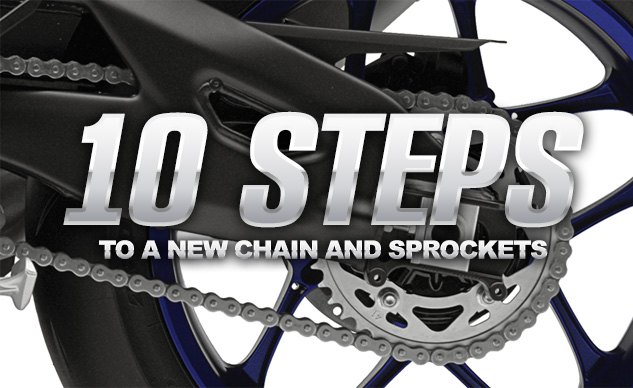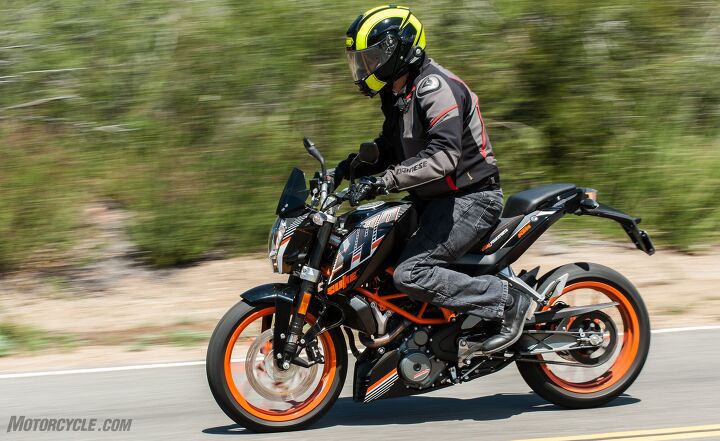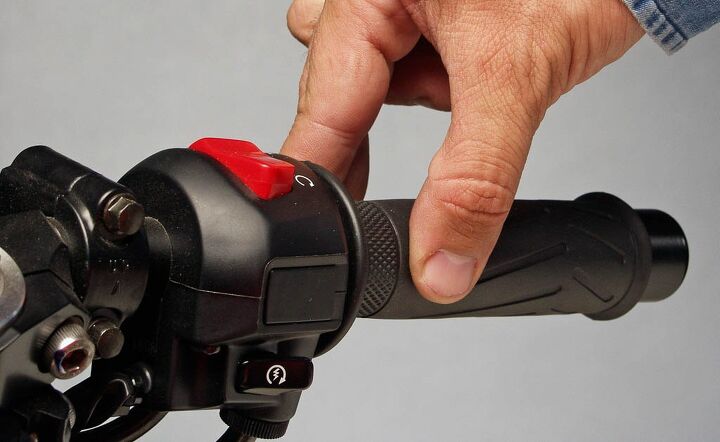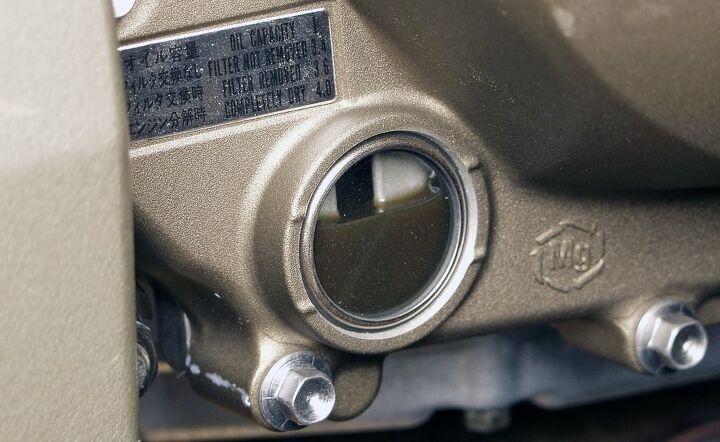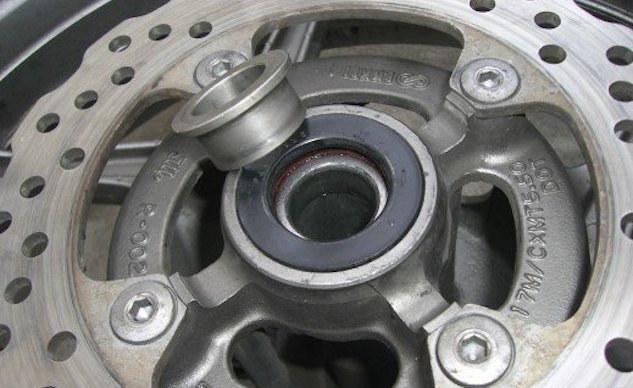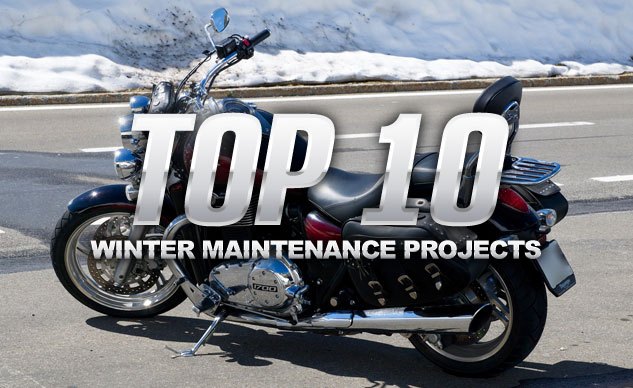#maintenance
Top 10 Tips For Washing Your Motorcycle
Depending on your perspective, washing your motorcycle is either a great way to spend some quality time with your bike or a chore that prevents you from riding. Either way, the benefits from washing your bike are measurable. First, it’s clean and looks good, providing you with a feeling of pride when you’re out on the road. Second, cleaning your bike protects your bike from the ravages of time. Oxidation never sleeps. Cleaning off harsh road grime and adding protective coatings helps delay its progress. Finally, staying intimately acquainted with your motorcycle can actually help you spot troubles before they develop into something more serious.
Don't Forget: April Is Check Your Helmet Month
As the first week of April has now come and (almost) gone, we want to remind readers that this month is National Check Your Helmet Month. As such, don’t forget that the average life span for a helmet is three to five years. Numerous times we’ve seen riders wearing helmets far, far, older than five years simply because a visual inspection with their untrained eye deemed the helmet to be in acceptable working order.
MO Wrenching: How To Bleed Your Brakes
If you read our recent Battle Of The 125cc Ankle Biters, Part 1, which included the Kymco K-Pipe, you know that it had some front brake issues that “Guns” Roderick decided to use as an opportunity to work on his arm strength via repeated hand motions – namely bleeding the bike’s front brake hydraulics. While the brake’s power was improved, it never reached the performance level we felt it was capable of achieving. Naturally, the topic of brake bleeding technique came up. This oft-neglected maintenance task is fairly easy and should be done to replace the hydraulic fluid at the intervals recommended by your bike’s manufacturer.
MO Wrenching: Brake Caliper Rebuild
The photo above points out how important properly functioning brakes are to getting the most performance possible out of them. Brakes, however, are instrumental in more than riding quickly. They are necessary for your safety.
MO Tested: Velocity Chain Maintenance System
In the past, I’ve called cleaning your motorcycle’s chain a messy-but-necessary task. Lubing the chain can also be messy if you’re careless, but neither chore needs to be that way. The secret is performing both frequently. After some time sampling the Velocity Chain Maintenance System, I think it could be just the ticket for simplifying both activities – and making a little less mess in the process.
MO Survey: Do You Do Your Own Wrenching?
We all know the cliché: The motorcyclist who is intimately acquainted with all the parts of his motorcycle. His man cave may not have a TV, but it has a bike lift. Then there are the tools, cabinets of them. However, like most truisms, they are only partially based in fact. Yes, there are home mechanics who fit this description perfectly, but there are also tons of riders who never turn a wrench on their bikes. Is the distinction the difference between hobbyists and and dyed-in-the-wool enthusiasts? It would be easier if the answer were that simplistic, but the reasons people have for wrenching – or not – on their motorcycles are as varied as the people out riding bikes.
Ten Steps To A New Chain And Sprockets
Changing a motorcycle chain is a relatively easy job for even the most inexperienced mechanic. Back in the old days, you needed little more than a hacksaw, a pair of vise grips and a correctly sized chain. Many beginning mechanics installed their first replacement chain in this manner. However, times have changed, and riveting master links, rather than clip connectors, are the standard. So, while the process is still fairly simple, you will need a specialized tool (or a friend that has one).
MO Better: SBS RS Brake Pad Review
In our Beginner-Ish Sportbike Shootout, the KTM entry got beat up about its brakes. When compared to the CBR300, the Ninja 300, and the YZF-R3 , the poor RC390’s binders, well, just didn’t compare. Of course, this sparked discussions about whether the ByBre brakes were inferior to the components that its parent, Brembo, both designs and manufactures. Well, thanks to Scandinavian Brake Systems (SBS), we’ve had the opportunity to test this theory with a set of SBS 877RS pads. For this test, we’ve enlisted a 390 Duke, which shares its single 300mm disc and 4-piston, radial-mount caliper with the RC390, as our test mule.
How To Adjust Throttle Free Play and Why
One hallmark of a skilled rider is the ability to precisely deliver the right amount of throttle at the right time. Smooth transitions on and off the throttle play a vital role in keeping the chassis stable in a corner. Since the throttle cables are still, for the majority of bikes, the direct link between your hand and the butterfly valves in the mixers, minimizing slop in the system will pay big dividends.
How Do You Check A Motorcycle's Oil Level?
Modern motorcycles are incredibly reliable, but they still require you to check a few things in order to keep them running at full potential. The engine oil is one of those items you should never neglect. After all, you don’t want to run your high-revving, manufactured-to-aerospace-tolerances, and extremely-expensive-to-replace engine without the proper lubricant, do you? Additionally, an engine’s oil can reveal a good bit of information about the condition of its internals to even a novice mechanic armed with a little information.
How To: Capture Your Wheel Spacers
Ever feel like you need a third hand to get everything lined up and back in place when you’re trying to replace a wheel, only to have a spacer fall out and roll directly into the path of a passing street sweeper? Here’s one thing that may not work on all bikes, but definitely works on many of them, including the last-generation ZX-6R this rear wheel belongs to. Often you can remove the oil seal (the black rubber ring), and flip the spacer so that the collar goes toward the inside. Replacing the seal on top of the collar then holds the spacer in place, i.e., “captures” it, while maintaining the same overall width. Measure to make sure that’s the case if there’s a shadow of a doubt!
MO Wrenching: How To Replace Brake Pads
Brakes perform a critical job on a motorcycle, which means you should pay special attention to the condition of your bike’s pads. So, plan on replacing your pads when a minimum of 2mm of the pad material remains. Even with 2mm of pad material left, your braking power could be compromised under heavy braking, like at a trackday or a panic stop. Yes, if you like to gamble, you could run them to the absolute limits of their service, but why roll the dice on such an important safety feature.
Top 10 Winter Maintenance Projects
Winter in locales with real seasons is a tough time for motorcyclists. The weather doesn’t just force them to stop riding – which is a big enough loss. Riders also lose the time they spend with their motorcycle. While absence may make the heart grow fonder, forced moto-abstinence can lead to Parked Motorcycle Syndrome, causing all sorts of unpleasant behavior in the affected rider. Take our word on this.
10 Steps to a Fresh Clutch
Although we use it every time we ride, most riders rarely think about their bike’s clutch. Even though we may do the right thing by adjusting and lubricating the cable occasionally, or perhaps flushing the hydraulic fluid according to the factory maintenance schedule, do we ever consciously think about the daily abuses our clutch undergoes each time we pull away from a stop? Never. That is, until something starts to go wrong.



